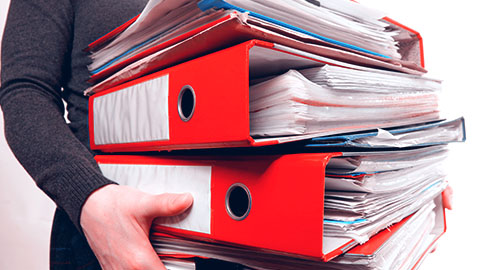Whether done by conference call or held in-office, meetings are an inevitable part of the weekly grind for anyone from entry-level staff members and supervisors to upper management and senior executives. Unfortunately, meetings don’t always produce an useful outcome, making them a big waste of time for attendees. Nevertheless, with proper planning and effective leadership skills from the facilitator, business and staff meetings can once again be meaningful and productive.
Having Efficient Meetings
The first couple of steps toward having efficient meetings are recognizing time-wasters and knowing how to avoid them.
One such example is the open call staff and management meeting to which the entire employee population is required to attend either all at once or in shifts. Largely populated meetings like this are rarely time-efficient because not all the topics covered affect or involve all employees in attendance.
Determining who will actually benefit from or can contribute to this meeting – as opposed to who will just as easily benefit from an email or memo outlining what was covered – is of importance.
For instance, if the topic is about client customer service issues, employees without direct client contact don’t need to attend. Doing this not only encourages productivity while the meeting is in motion, it also prevents uninterested and unnecessary attendees from influencing the flow of the meeting.
Ineffectively of Lunch Meetings
Another common time-waster is the lunch meeting. Although quite popular, lunch meetings are ineffective mainly because of two reasons: one, attendees can’t help but feel that their personal time is being intruded upon and two, they feel too hungry to actively participate. Of course, this problem can be addressed by serving lunch before the meeting, but that can make attendees sluggish. Serving lunch during the meeting is another option, but it will result in a distracted audience.
A successful alternative to a lunch meeting is a late morning meeting. During a typical workday, 10:00 am is statistically a peak time for mental performance and attention. A meeting scheduled at or around 10:00am, ending with an employee lunch, is an optimal time for cultivating an interested audience.
Bad Documentation
Lastly, the most important time-waster to avoid is ill-prepared documentation. When discussing business strategies or similar topics, it’s best to disseminate the necessary information to the attendees beforehand. For example, if the plan is to change sales techniques, the sales team needs to see how and why a new strategy is effective. If shipping reviews score low in the packaging of goods, reviews and statistics should be made available with your packaging crew. Advance preparation is important to keep participants on track and within schedule.
The effect a meeting has on its audience directly determines the outcome and follow-through effort of the topics discussed. Thus, make sure your audience is involved, interested, and informed.
—
One type of important meetings that can’t afford to be useless are board meetings. Board meetings are essential as it involves high level agenda and discussions that affects the direction of how an organization is being run.
To mitigate the potential of uselessness of these important meetings, consider using a digital tool like a board portal that helps ensures that your meetings are constantly productive and engaging.
Convene has a full set of intuitive features that allows collaboration and effective decision-making. Simply put, Convene cuts out useless meetings within your organization.
Darren is the Content Director at Convene. Driven by his passion for content writing and knowledge of digitalization, he takes pride in providing content that helps drive digital transformation. Over the years, he has written blogs related to digital meetings, board management, and modern governance.










